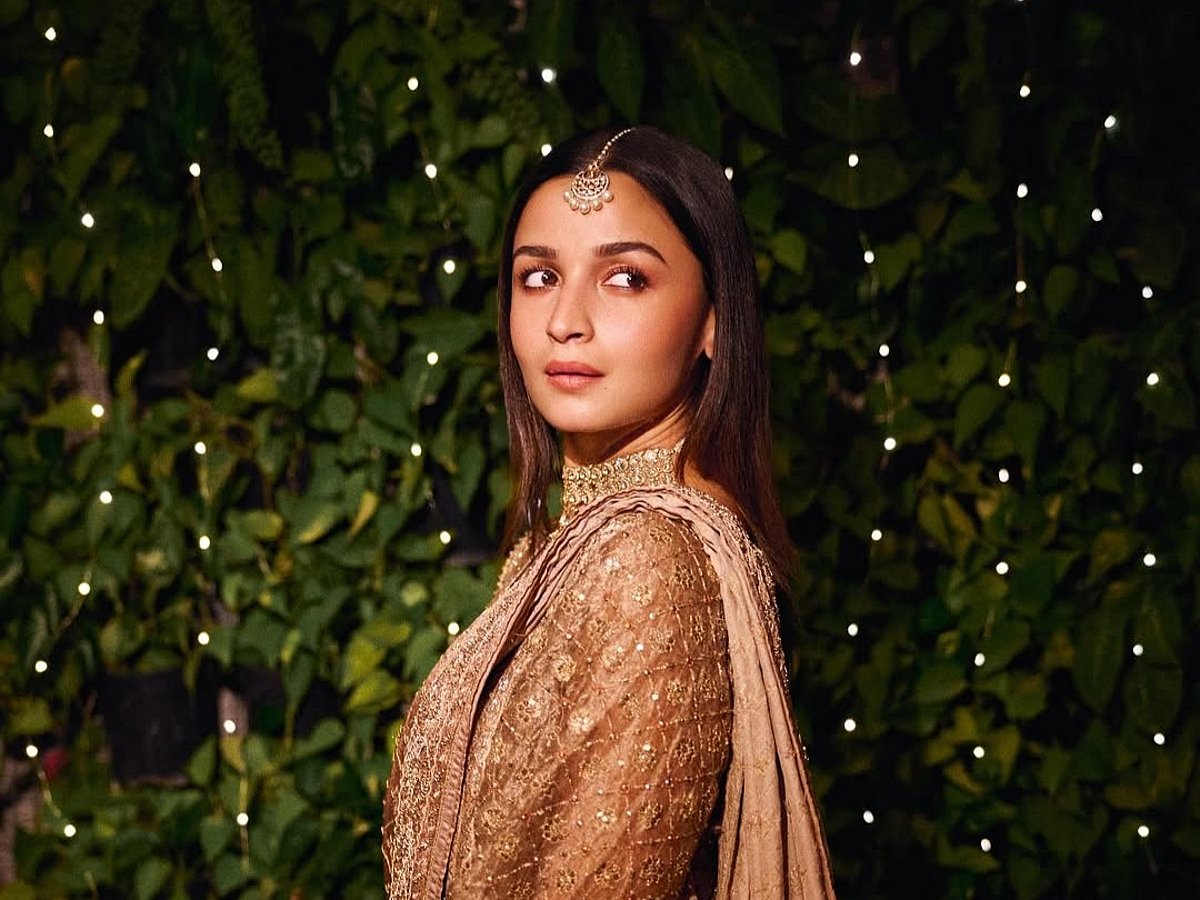Tips to Care for Heritage Sarees and Ensure Longevity
Sarees are not just garments; they are pieces of art that carry cultural significance and history. Recently, Alia Bhatt showcased a stunning rose-gold saree from Ritu Kumar’s archives at a family gathering, reminding us of the beauty and craftsmanship behind these traditional outfits. This particular saree, over three decades old, features intricate silver tikki embroidery, blending old-world charm with contemporary style.
The Allure of Alia Bhatt’s Saree
Styled by Rhea Kapoor, Alia’s ensemble was a perfect mix of elegance and modern flair. The saree was paired with a sleeveless bustier blouse and an embroidered jacket, creating a look that was both regal and edgy. Alia accessorized with a gold choker, maang tika, and stacked rings, while her soft makeup complemented the overall aesthetic. Her playful Instagram caption, “fam jam x diwali glam,” captured the joyous spirit of the occasion, showcasing the Kapoor family’s festive celebrations.
Caring for Your Heritage Saree
Owning a heritage saree like Alia’s is a privilege, and it requires proper care to ensure it remains as beautiful as the day it was made. Here are some essential tips to help you maintain your saree’s elegance for years to come.
Proper Storage Techniques
One of the most common mistakes in saree care is storing them in plastic covers. Instead, wrap your saree in muslin or cotton cloth to allow the fabric to breathe and prevent moisture buildup. Avoid airtight containers or synthetic bags, as these can trap humidity and lead to mildew.
Regular Refolding
Experts recommend refolding your sarees every three to six months. This practice helps prevent permanent creases, particularly in areas with zari or embroidery. Changing the folds also ensures that the fabric does not weaken along a single line over time.
Protecting Delicate Embellishments
For sarees with metallic detailing, such as Alia’s silver tikki embroidery, it’s advisable to store them with acid-free tissue paper or anti-tarnish sheets. These materials protect delicate embellishments from oxidation and dullness. Including silica gel packets can also help absorb any residual moisture.
Optimal Storage Environment
Store your sarees in a cool, dark, and dry place. Exposure to direct sunlight can fade dyes and damage delicate fibers. It is best to avoid hanging sarees for extended periods, as the weight can distort the weave. Instead, fold them neatly and lay them flat.
Natural Moth Repellents
To protect against silverfish or moths, consider using natural repellents like neem leaves or cloves. These alternatives are gentle and do not leave harsh odors or stains, unlike chemical mothballs.
Caring for your sarees is not merely a maintenance task; it is a way to honor the craftsmanship and cultural legacy they represent. When stored thoughtfully, your sarees can become cherished heirlooms, each fold telling a story of artistry, heritage, and timeless style.
FAQs
How often should I wash my saree?
It is recommended to wash your saree only when necessary, ideally after several wears. Always follow the care instructions specific to the fabric and embellishments.
Can I use a washing machine to clean my saree?
Using a washing machine is generally not advisable for sarees, especially those with delicate fabrics or embellishments. Hand washing in cold water with a mild detergent is usually the safest option.
What should I do if my saree gets stained?
For stains, act quickly by blotting the area with a clean, dry cloth. Avoid rubbing the stain. Depending on the fabric, you may need to consult a professional cleaner for best results.
Conclusion
Heritage sarees like Alia Bhatt’s rose-gold piece are treasures that deserve careful attention and maintenance. By following these tips, you can ensure that your saree remains a stunning representation of cultural artistry for generations to come. Embrace the responsibility of preserving these beautiful garments, and they will continue to tell their stories through time.
Heritage sarees often reflect the craftsmanship of skilled artisans who have honed their techniques over generations. The intricate designs and patterns found in these garments are not only aesthetically pleasing but also serve as a testament to the cultural narratives and traditions of various regions in India. Each saree can represent a unique story, often tied to the community and the history of its creation.
In addition to proper care and maintenance, it is essential to understand the specific fabric types and their unique properties. Different materials, such as silk, cotton, or chiffon, may require tailored care approaches to preserve their integrity. Familiarizing oneself with the characteristics of each fabric can enhance the longevity of the saree and ensure that it remains a cherished part of one’s wardrobe.
As the popularity of heritage sarees continues to grow, many designers are reviving traditional techniques and incorporating them into contemporary fashion. This fusion not only keeps the art of saree-making alive but also encourages a new generation to appreciate and invest in these timeless pieces. By valuing and caring for heritage sarees, wearers contribute to the preservation of cultural heritage and support the artisans behind these exquisite garments.
Also Read:
UAE’s Diverse Beauty Captured Through Photography
New Maternity Leave Support for Emirati Mothers in Abu Dhabi







